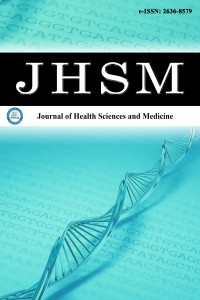1.
Khalfallah M, Allaithy A, Maria DA. Impact of the total ischemia time on no-reflow phenomenon in patients with st elevation myocardial infarction undergoing primary percutaneous coronary intervention. Anatol J Cardiol. 2022;26(5):382-387.
2.
APEX AMI Investigators. Pexelizumab for acute ST-elevation myocardial infarction in patients undergoing primary percutaneous coronary intervention: a randomized controlled trial. JAMA. 2007;297(1):43-51.
3.
Choo EH, Kim PJ, Chang K, et al. The impact of no-reflow phenomena after primary percutaneous coronary intervention: a time-dependent analysis of mortality. Coron Artery Dis. 2014;25(5):392-398.
4.
Resnic FS, Wainstein M, Lee MK, et al. No-reflow is an independent predictor of death and myocardial infarction after percutaneous coronary intervention. Am Heart J. 2003;145(1):42-46.
5.
Annibali G, Scrocca I, Aranzulla TC, Meliga E, Maiellaro F, Musumeci G. "No-reflow" phenomenon: a contemporary review. J Clin Med. 2022;11(8):2233.
6.
Yu H, Wang BB, Zhao M, Feng F, Li HD. Homocysteine levels in patients with coronary slow flow phenomenon: a meta-analysis. PLoS One. 2023;18(7):e0288036.
7.
Moretti R, Giuffré M, Caruso P, Gazzin S, Tiribelli C. Homocysteine in neurology: a possible contributing factor to small vessel disease. Int J Mol Sci. 2021;22(4):2051.
8.
Ascione L, De Michele M, Accadia M, et al. Effect of acute hyperhomocysteinemia on coronary flow reserve in healthy adults. J Am Soc Echocardiogr. 2004;17(12):1281-1285.
9.
Omland T, Samuelsson A, Hartford M, et al. Serum homocysteine concentration as an indicator of survival in patients with acute coronary syndromes. Arch Intern Med. 2000;160(12):1834-1840.
10.
Matetzky S, Freimark D, Ben-Ami S, et al. Association of elevated homocysteine levels with a higher risk of recurrent coronary events and mortality in patients with acute myocardial infarction. Arch Intern Med. 2003;163(16):1933-1937.
11.
Fácila L, Nuñez JE, G VB, et al. Early determination of homocysteine levels in acute coronary syndromes, is it an independent prognostic factor? Int J Cardiol. 2005;100(2):275-279.
12.
Ibanez B, James S, Agewall S, et al. ESC Scientific Document Group; 2017 ESC Guidelines for the management of acute myocardial infarction in patients presenting with ST-segment elevation: The Task Force for the management of acute myocardial infarction in patients presenting with ST-segment elevation of the European Society of Cardiology (ESC). Eur Heart J. 2018;39(2):119-177.
13.
TIMI Study Group. The Thrombolysis in Myocardial Infarction (TIMI) trial: phase I findings. N Engl J Med. 1985;312(14):932-936.
14.
Gibson CM, de Lemos JA, Murphy SA, et al. Combination therapy with abciximab reduces angiographically evident thrombus in acute myocardial infarction: a TIMI 14 substudy. Circulation. 2001;103(21):2550-2554.
15.
Farooq V, van Klaveren D, Steyerberg EW, et al. Anatomical and clinical characteristics to guide decision making between coronary artery bypass surgery and percutaneous coronary intervention for individual patients: development and validation of SYNTAX score II. Lancet. 2013;381(9867):639-650.
16.
Morrow DA, Antman EM, Parsons L, et al. Application of the TIMI risk score for ST-elevation MI in the National Registry of Myocardial Infarction 3. JAMA. 2001;286(11):1356-1359.
17.
de Waha S, Patel MR, Granger CB, et al. Relationship between microvascular obstruction and adverse events following primary percutaneous coronary intervention for ST-segment elevation myocardial infarction: an individual patient data pooled analysis from seven randomized trials. Eur Heart J. 2017;38(47):3502-3510.
18.
Jaffe R, Charron T, Puley G, Dick A, Strauss BH. Microvascular obstruction and the no-reflow phenomenon after percutaneous coronary intervention. Circulation. 2008;117(24):3152-3156.
19.
Lavi S, Prasad A, Yang EH, et al. Smoking is associated with epicardial coronary endothelial dysfunction and elevated white blood cell count in patients with chest pain and early coronary artery disease. Circulation. 2007;115(20):2621-2627.
20.
Quyyumi AA. Endothelial function in health and disease: new insights into the genesis of cardiovascular disease. Am J Med. 1998;105(1A):32S-39S. doi: 10.1016/s0002-9343(98)00209-5.
21.
Janssens SP, Shimouchi A, Quertermous T, Bloch DB, Bloch KD. Cloning and expression of a cDNA encoding human endothelium-derived relaxing factor/nitric oxide synthase. J Biol Chem. 1992;267(21):14519-14522.
22.
Wang L, Niu H, Zhang J. Homocysteine induces mitochondrial dysfunction and oxidative stress in myocardial ischemia/reperfusion injury through stimulating ROS production and the ERK1/2 signaling pathway. Exp Ther Med. 2020;20(2):938-944.
23.
Kim CS, Kim YR, Naqvi A, et al. Homocysteine promotes human endothelial cell dysfunction via site-specific epigenetic regulation of p66shc. Cardiovasc Res. 2011;92(3):466-475.
24.
Nakbi A, Koubaa N, Ben Hamda K, et al. Association between oxidative stress parameters and inflammation markers according to the gravity of the acute coronary syndrome. Tunis Med. 2011;89(7):621-626.
25.
Naghshtabrizi B, Shakerian F, Hajilooi M, Emami F. Plasma homocysteine level and its genotypes as a risk factor for coronary artery disease in patients undergoing coronary angiography. J Cardiovasc Dis Res. 2012;3(4):276-279.
26.
Li N, Tian L, Ren J, Li Y, Liu Y. Evaluation of homocysteine in the diagnosis and prognosis of coronary slow flow syndrome. Biomark Med. 2019;13(17):1439-1446.
27.
Acet H, Ertaş F, Akil MA, et al. The utility of the TIMI risk index on admission for predicting angiographic no-reflow after primary percutaneous coronary intervention in patients with STEMI. Turk J Med Sci. 2016;46(3):604-613.
28.
Morrow DA, Antman EM, Person L, et al. Application of TIMI risk score for ST elevation myocardial infarction in the National Registry of Myocardial Infarction 3. JAMA. 2001;286(11):1356-1359.
29.
Topol EJ, Yadav JS. Recognition of the importance of embolization in atherosclerotic vascular disease. Circulation. 2000;101(5):570-580.
30.
Brosh D, Assali AR, Mager A, et al. Effect of no-reflow during primary percutaneous coronary intervention for acute myocardial infarction on six-month mortality. Am J Cardiol. 2007;99(4):442-445.
31.
Chen Y, Gao YF, Wang YF, Wang CJ, Du Y, Ding YH. Influence of stent length on periprocedural outcomes after primary percutaneous coronary intervention in patients with ST segment elevation myocardial infarction. Clin Interv Aging. 2022;17:1687-1695.
32.
Soylu K, Ataş AE, Yenerçağ M, et al. Effect of routine postdilatation on final coronary blood flow in primary percutaneous coronary intervention patients without angiographic stent expansion problems. J Investig Med. 2018;66(8):1096-1101.

